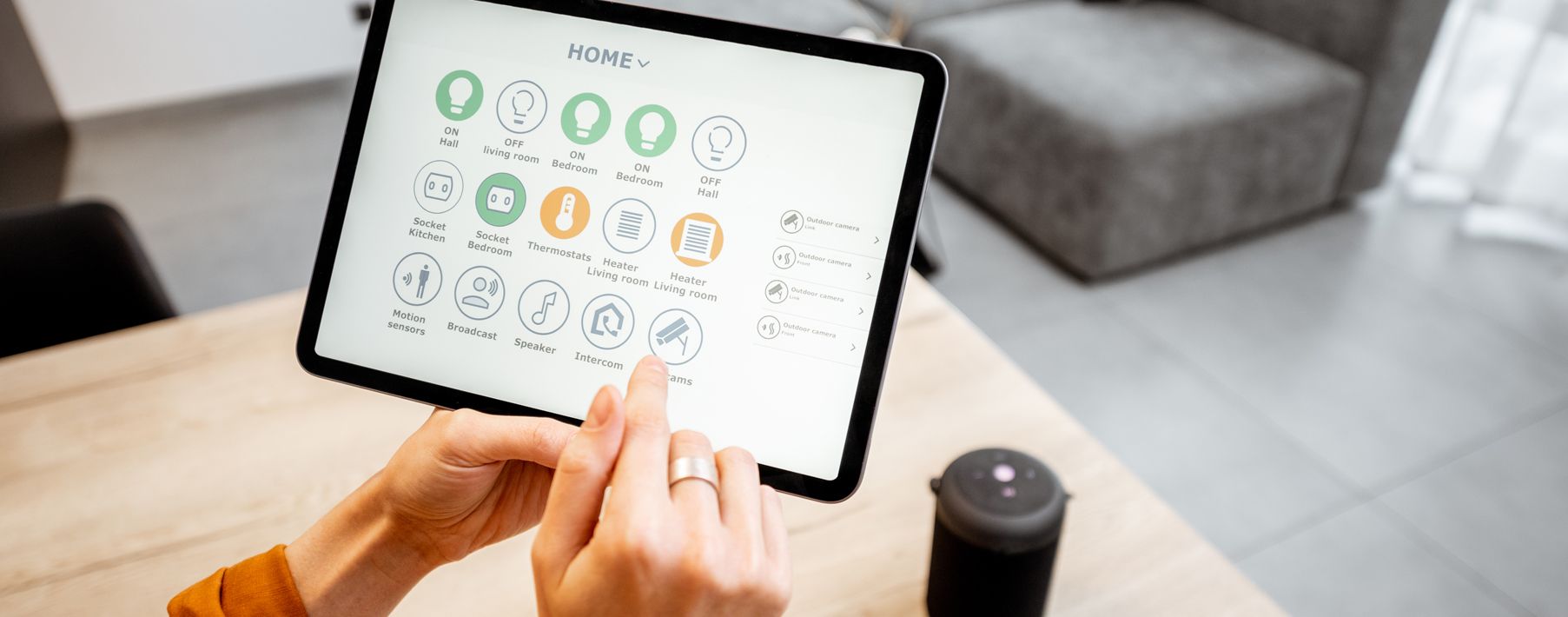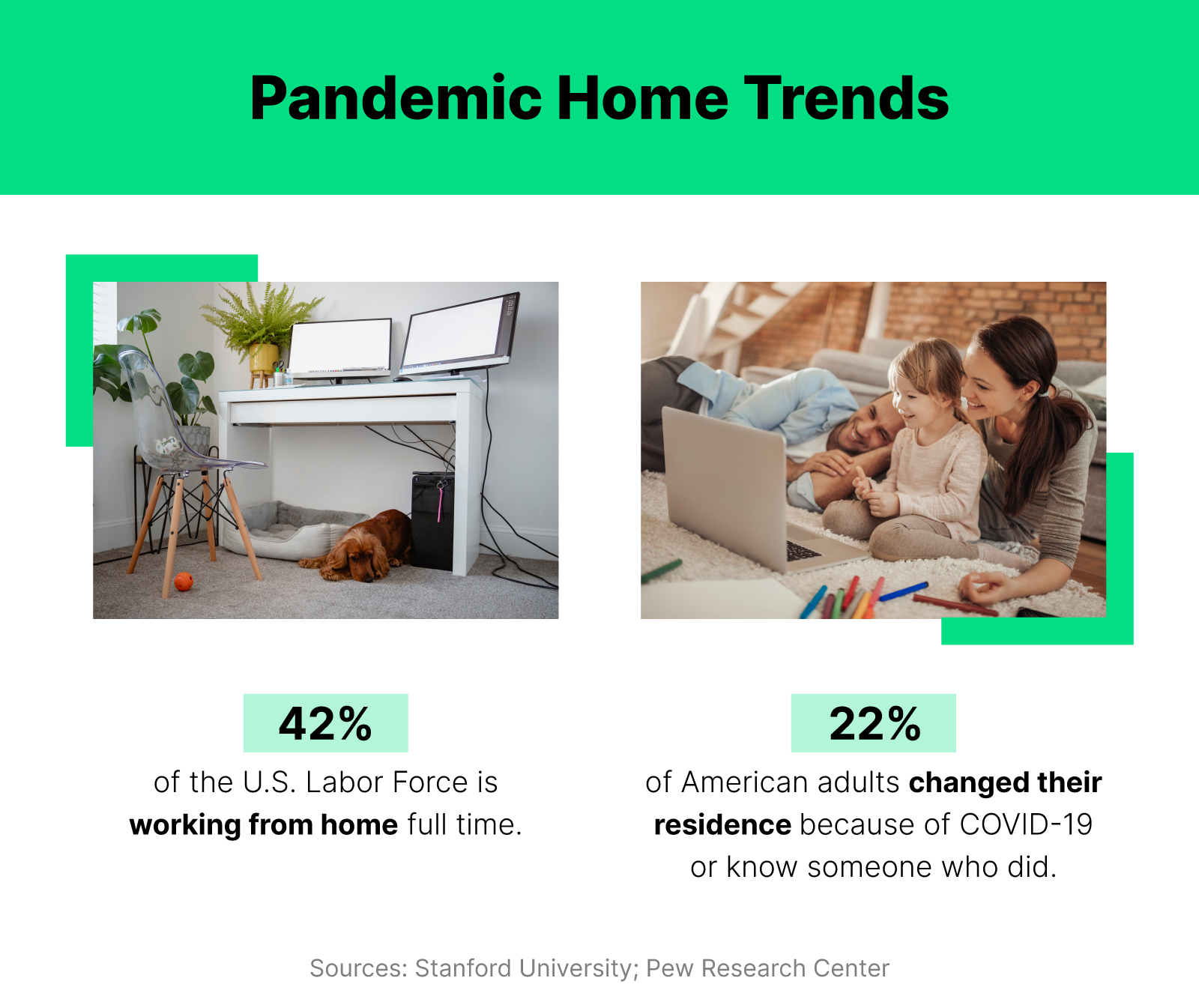How COVID-19 Could Make Future Homes Smarter

“There’s no place like home.” Dorothy’s words to the Tinman, the Scarecrow, the Cowardly Lion and Glinda echo even truer today than they did back in 1939. There’s truly no place quite like today’s home, which also functions as a school, an office, the gym, your doctor’s office, the site of your next happy hour and so much more.
The pandemic has increased the amount of time we spend at home, and it’s turned our homes into oases where we go to feel safe, comfortable and separated from whatever’s going on outside. It’s also highlighted the need for certain smart home devices that can make our homes run a little more smoothly — for example, ones that allow us to avoid touching surfaces or others that give us a little privacy from family members (especially if we live with seniors who are more susceptible to COVID-19).
We spoke to smart home and design experts and put together our best guesses at what future homes might look like after the pandemic.
Homeowners’ shifting priorities amid the pandemic
Let’s first explore some of the ways the pandemic has shifted homeowners’ habits and priorities.
Most notably, companies and schools have transitioned to remote work and learning. Large, open-concept rooms might’ve worked before the pandemic when families woke up, went off to work or school and only interacted with each other for extended periods of time in the evenings.
Not so anymore. Many families now yearn for walled-off and private (yet inspiring) work spaces at home, especially as a majority of business leaders say remote work is here to stay even beyond the pandemic. As families look for ways to spread out at home, that opens the door for unique new smart home technologies, which we’ll explore in the next section.
At the same time, many other families have opted to move closer together. The Pew Research Center reported that 22% of American adults changed their residence because of the pandemic or know someone who did. Of those who moved because of COVID-19, 20% said they did so to be closer to family members. This trend could accelerate the rise of multigenerational households and shift the way that future homes function to accommodate family members of different ages living together.
Additionally, the pandemic has emphasized cleanliness and efficiency more than ever before. Why should you touch something physically (like light switches) if there’s touchless technology that allows you to do the same thing more easily? Or why should you have to interact with someone in person (like a delivery driver) if you can do it virtually (through a doorbell camera)? These trends could likely bolster the rise of contactless home technology.
So far it appears that Americans are willing to make changes to their homes or even buy new homes to match their shifting preferences. In June and July, existing home sales soared and even surpassed their pre-pandemic levels, according to the National Association of Realtors. Meanwhile, new home sales between June and July were 36% higher than at the same time last year, according to the U.S. Census Bureau.
Given all of these trends, let’s explore what future smart homes might look like.

Smart homes in a post-COVID-19 world
Maybe you purchased a doorbell camera to keep track of your pandemic deliveries as you ordered more online. You should expect to see a lot more of these cameras in your neighborhood over time, according to Aliza Vigderman, a smart home technology expert at Security.org.
“We know that package deliveries are on the rise from COVID-19, but people don’t want to be near the delivery people if they can help it,” Vigderman told Hippo. “I believe that as future homes are built, smart tech like video doorbells will be hardwired before the home is purchased.”
That’s far from the only smart home technology that’ll likely become more common in future homes. Let’s look at several other ideas:
Health Safety: Dry indoor air has been linked to the spread of flu, according to the journal Public Library of Science Biology. Researchers in Australia and China made a similar connection between low relative humidity levels and an increased number of COVID-19 cases. Given that drier air may increase the transmission of certain viruses, you might see more homeowners install smart devices that can monitor their indoor humidity levels and direct them to humidify rooms if necessary.
Additionally, you could see the transition to more voice-activated lights, appliances and electronics as homeowners try to limit what they touch in their homes, as well as widespread use of antiviral surfaces throughout homes. Smart bathroom technology can even help you keep your surfaces cleaner in-between uses.
Product shortages: Early on in the pandemic, the nation faced widespread toilet paper shortages as Americans stormed grocery stores and hoarded the bathroom necessity.
In future crises, you might see smart home technology that can assess your inventory levels of food, toiletries and other items and compare that to local consumer demand. Do you have enough of the item to last you a while? Are certain items selling out quickly at local stores? Do you need to reorder? There are already smart food containers that can reorder food when you’re running low.
Package protection: We’ve already seen that doorbell cameras are expected to rise in popularity after the pandemic. Automatic smart locks with temporary codes for delivery drivers to enter your home could also rise in popularity. Or, homeowners might prefer a smart mailbox or parcel locker on their porch that secures packages.
Work from home solutions: A Stanford University researcher estimates that 42% of the U.S. Labor Force currently works from home and, since remote work is likely here to stay, homeowners will turn to a variety of smart home solutions to make it a bit easier. For example, you could see greater use of smart windows with noise-reducing or cancelling technologies, even as the windows are open.
To keep an eye on kids while they learn at home, parents might also look to smart cameras within the home.
“Parents need to keep a close eye on children, but to work efficiently they need space and very little distractions,” said Daniel Foley, a commercial real estate agent in San Francisco. “New homes will have indoor cameras fitted so that you can watch over the house without being in the same room.”
Widespread remote work could also accelerate the use of clean energy solutions like solar panels as homeowners spend more time at home and look to reduce their energy bills.
Home security: Similarly, as families spend more time at home, they’ll naturally look for ways to boost home security. That might mean more outdoor cameras, alarm systems and even smart blinds to easily control who can see into your home.
Other future home modifications
As homes become more of an oasis and families spend more time in them, they could also change in significant architectural and design ways:
- Virtual school rooms: More playrooms and other separated spaces for virtual learning throughout the home (Aliza Vigderman, Security.org)
- Recreation rooms: Greater emphasis on home theaters, game rooms and swimming pools to make homes more enjoyable (Rick Patterson, Poolnomics)
- Unique outdoor spaces: Screened-in porches to keep out disease-spreading insects (Daniel Mogensen, Kodyl)
- Community-boosting areas: Front yard vegetable gardens and patios to facilitate more socially distanced interactions with neighbors (Cassy Aoyagi, FormLA Landscaping)

Even if you can’t see yourself using a smart mailbox or a smart pantry anytime soon, you can still install plenty of simple, yet important, devices to protect your home today. For example, smart thermostats, water shutoffs, water leak detectors and gas shutoffs are all great options to keep your home running smoothly. (FYI: Explore our home maintenance checklist to learn how you should take care of your home during each season.)
As an added bonus, installing smart home technology can lower your premiums by as much as 15% in some cases. Learn more about our complimentary smart home monitoring system included with our policies, as well as other ways that we’re modernizing home insurance through things like enhanced coverage for your computers and home office equipment and even coverage for house cleaners, babysitters and other folks who help run your home.



